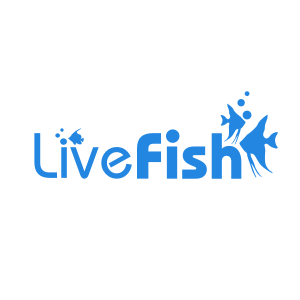Southern Goatfish - Large
The Southern Goatfish as all Goatfish has barbels under it’s mouth which it uses to search the sea bottom for buried prey to eat.
The Southern Goatfish’ eyes and mouth are small, and it has a long snout and fleshy lips. There are barbels on its’ chin which are a similar length to its’ head. It has 2 dorsal fins and a tall fin with 9 spines.
The colour of the Southern Goatfish changes depending on it’s age and also how excited it is. The adults display blue spots which explains one of the other names that it is know by, the Blue Spotted Goatfish. When the adults get excited they can also take on a pinkish yellow colour.
When required they can use camouflage and change colour to blend in with their surroundings.
The Southern Goatfish lives along the coastline of Australia in temperate waters. It has recorded sightings from the western and southern coasts of Australia to Tasmania and up the eastern coast as far as New South Wales.
The natural habitat of the Southern Goatfish is in sheltered waters along the coastline, like bays and estuaries. It usually resides at depths of between 2-40 meters, near shallow reefs and rocky or sandy seabeds.
With regards to breeding, the majority of goatfish species are pelagic spawners. The eggs they release are buoyant and float with the current until they are ready to hatch. It usually takes between 4-8 weeks for larvae to develop. They then go through metamorphosis and start to develop barbels for sand sifting and bottom feeding
These are active fish, but they usually peace towards other fish.
Tank Recommendations for Southern Goatfish
Goatfish need a large tank, especially if you plan to keep many specimens together so that they can shoal. They are also bottom dwellers and like a sand substrate as they like to search for food to eat.
While some goatfish may be suitable additions to reef aquariums, a large fish only aquarium is a preferred habitat for this goatfish.
Their diet can cause potential problems in a reef aquarium and size can also be an issue as Southern Goatfish can grow up to 42cm in length.
Aquarium size should be at least 125 gallons (475 litres) and 6 feet (180 cm) long. Goatfish need a combination of large open areas in a tank for sifting sand, as well rocky/reef areas.
Goat fish are generally hardy creatures, but if scared or startled they can jump from the tank. A secure lid to keep the fish safe and contained within the aquarium should is a must.
Suitable Tank Buddies
These goatfish are peaceful in nature which make them compatible with a lot of different fish.
Despite being quiet dwellers their diet does mean that some smaller fish (watch out gobies and blennies!) and any crustaceans in the tank may become prey.
Usually Compatible
Goatfish mix well with Batfish, Blennys, Boxfish, Butterfly fish, Cardinals, Clownfish, Damsels, Filefish, Hawkfish, Higfish, Parrot fish, Puffer fish, rays, Snappers and Tangs.
Sometime Compatible
Be careful when keeping them with Angler fish, Frog fish, Dragonnets, other Goatfish, Gobies, Groupers, Lionfish, Scorpion fish, Triggerfish, Wrasses and invertebrates.
They don’t mix well with some as they compete for the same food resources. Whilst some may become food like some crustaceans and invertebrates. When they are small others like Groupers may eat them if they are small enough to fit into their mouths.
Rarely Compatible
There aren’t that many tank mates that don’t work with Goatfish. Eels and Sharks as they may decide to make a meal out of them though.
Seahorses and Pipefish aren’t good to mix with them either as they won't be able to compete for food with the goatfish.
Feeding Your Southern Goatfish
In the wild the Goatfish uses its barbels when searching for prey, usually consisting of a variety of invertebrates, crustaceans, worms and small fish.
Searching for food often means overturning small pieces of rubble and coral. This can be disruptive in an aquarium environment with small artefacts and coral being moved around.
Goatfish are not fussy eaters and will consume anything that will fit in their mouths.
| Scientific Name | Upeneichthys vlamingii |
|---|---|
| Care Level | Moderate |
| Common Names | Blue-Spotted Goatfish, Southern Goatfish, Black-Striped Goatfish, Blue-Striped Red Mullet, Southern Red Mullet or Western Red Mullet |
| Diet | Omnivore |
| Fish Family | Mullidae |
| Max. Length (cm) | 40 |
| Min. Tank Volume (l) | 475 |
| Origin | Indo Pacific |
| Reef Safe | No |
| Sociability | Peaceful |
| Venomous | No |
| Water Conditions | 24 - 28° C, dKH 8-12, pH 8.0-8.4, sg 1.023-1.025 |

